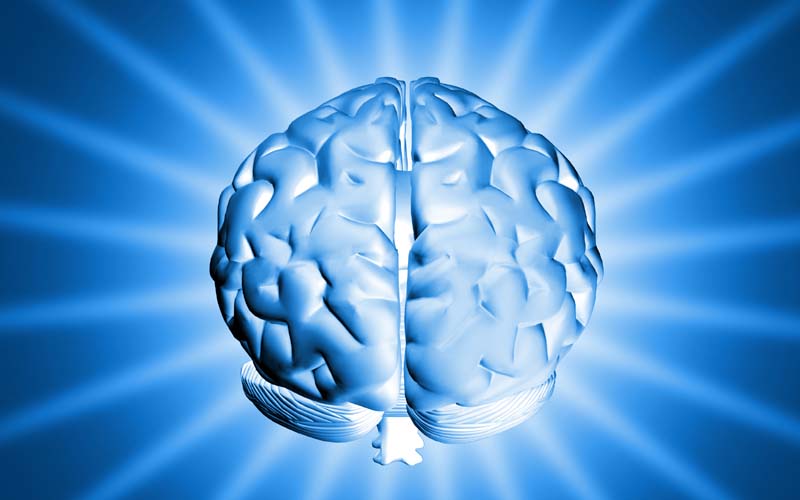Before I list you the various types of mental disorders, you must know what a mental disorder literally is.
So, What Is A Mental Disorder?
A mental disorder, also called mental illness is a health condition, which affects a person’s thinking, behavior, emotions and mood. It can affect a person of any age and race. A mental disorder can be from mild to severe. When it affects, a person finds it very hard to carry out even simple day-to-day activities of life. Therefore, it requires immediate treatment or else it can even lead to death.
Signs And Symptoms Of Mental Disorders
When a person suffers from a mental disorder, he or she frequently suffers the below
- Feeling low and sad
- Lack of energy
- Depressed most of the time
- Excess fear
- Excess tension
- Extreme changes in mood
- Being alone always
- Being dull and tired
- Inability to focus
- Stressed out
- Confused (extreme)
- Suicidal thoughts
- Guilty feelings (extreme)
- Use of excess alcohol
- Excess smoking
- Changes in his/her sex drive
- Excess anger
- Being violet most of the time
- Inability to carry out simple activities
- Facing difficulties in problem solving
10 Types Of Mental Disorders
The list of mental disorders is just endless. However, I am listing you a few major ones, which are widely seen.
1. Anxiety Disorder
This is one of the common types of mental disorders seen today. A person suffering from this particular disorder faces rapid heartbeat, extreme fear towards something (can be a person, object or a situation), extreme nervousness, sweating etc. Anxiety disorder can be further classified into few types, which are
- OCD (Obsessive Compulsive Disorder): This is characterized by act of doing something repeatedly. For example, washing hands for more than 20 times a day or checking stuffs over and over again. Moreover, the person gets unwanted thoughts. It becomes very hard for the person to resist his/her feelings. If there is an urge to do something, he or she cannot control or stop from doing it!
- PTSD (Post-Traumatic Stress Disorder): This mental disorder literally occurs after either a traumatic incident or something that threatens or makes the person feel helpless. To name a few traumatic events, it can be kidnapping, rape, terrorist attacks, plane crash, car accidents, unexpected death of beloved, wars etc. A person suffering with this disorder often gets disturbed. He/she keeps thinking of what happened on past, facing severe nightmares, sweating, muscle tension, rapid breathing, nausea, pounding heart, intense distress etc.
- Panic Disorder: This mental illness can be experienced by a person at any point of time and in any situation. An individual with this disorder feels ashamed and discouraged (extremely), when he or she is unable to carry even the normal routines. The symptoms include unexpected & repeated fear attacks, intense worry, breathing problems, sweating, numb hands, dizziness, stomach pain, chest pain etc.
- Generalized Anxiety Disorder: This is one of the majorly seen types of mental disorders, wherein a person experiences extreme tension, nervousness and chronic depression. It may be less intense when compared to a panic attack but it can last longer (1 day to even 6 months).
- Phobia: This is defined as “fear of something”. It is actually a mental disorder. It is when a person experiences fear towards an object, a creature, a situation etc. You might have heard people being scared of darkness, ghosts, heights, speed, water, spiders etc. All these are phobias and each holds a scientific name too.
- Social Anxiety Disorder: This is actually a phobia, widely known as social anxiety phobia, where a person is scared to do even common things front of people. Example, he or she might be scared to talk or eat in front of people. The main symptoms include blushing, sweating, inability to judge people, being very scared of people, hard time in making some friends, trembling, feeling sick etc.
2. Mood Disorders
This is also known as “Affective Disorder”. An individual with this disorder faces extreme happiness or extreme sadness. A mood disorder is classified into few types, which are as follows
- Depression: It is natural for humans to be sad at times, especially when something goes wrong in life. This feel passes off within sometime. However, there are people who suffer extreme depression. This is when it becomes a mental illness actually. When an individual is extremely depressed, he or she finds hard to sleep, eat, work, think and enjoy life freely.
- Bipolar Disorder: This is another commonly seen type of disorder, which has its other name – “Manic-Depressive”. This mental disorder causes unusual changes in energy, activity and mood levels. A person finds it very difficult to carry out even simple day-to-day activities. Major symptoms include sudden happiness, sudden upset, extreme irritability, feeling sad for a long time, suicidal thoughts, no proper sleep, finding hard to concentrate, forgetting things and problems in decision-making.
3. Psychotic Disorder
This is one of the commonly seen types of mental disorders, which involves distorted thinking and awareness. The 2 major signs of a psychotic disorder are: One, hallucinations – experiencing sounds or images that are unreal and two, delusions – even a false belief is considered true by the sufferer. One of the common psychotic disorder types is Schizophrenia.
- Schizophrenia: It is a type of illness, which is severe and chronic. People suffering this disorder often hear voices and feel as if people around them are reading, controlling and plotting their minds. People with brain disorder actually talk without even thinking. They are occupied with negative thoughts and speak very little.
4. Eating Disorder
Next on the types of mental disorders is “Eating Disorder”. This illness involves extreme attitudes, behaviors and emotions towards food. This disorder can be classified into 2 types, which are as follows
- Anorexia Nervosa: A person suffering this disorder is called “Anorexic”. It affects both mind as well as body. People with this mental disorder eat very less food. They even starve sometimes. Eventually they start becoming dangerously thin but still perceive as if they are overweight. An anorexic becomes so undernourished at times that they literally require being hospitalized.
- Bulimia Nervosa: This eating disorder is actually characterized by binge eating or over eating. It is when your diet and food begins to dominate you. When a person struggles with bulimia, he or she often battles with the thoughts to either staying thin or losing weight. The person might not wish to binge – the person is clearly aware of the fact that he or she will be ashamed or guilty afterwards but still the person gives in to food.
It is advisable to take the guidance of a physician or eating disorder treatment programs to get rid of this.
5. Addiction Disorder
As the name itself implies, a person with an addiction disorder is extremely addicted to something. He or she has an uncontrollable urge to act on things, which can be very harmful to others and themselves. Some examples include smoking, drinking, stealing, gambling etc. When this goes to the extreme — they even forget all their responsibilities and even relationships.
6. Personality Disorder
In this type of mental disorder, a person has inflexible and extreme personality traits, which are very distressing. It can cause problems at school, work and social relationships. Moreover, the individual’s thinking and behavioral patterns vary from society’s expectations.
Other Rarely Seen Types Of mental Disorders
7. Adjustment Disorder
This is one of the less commonly seen types of mental disorders, where an individual develops behavioral or emotional symptoms on a stressful situation or event. The stressors might include a natural disaster (a tornado or an earthquake), crises (car accidents), interpersonal issues (divorce), job loss, abuse, unexpected death of beloved etc.
8. Dissociative Disorders
People suffering from this disorder experiences severe changes or disturbances in consciousness, memory, general awareness and identity of their surroundings and themselves. It is generally associated with irresistible stress, which is the outcome of accidents, disasters and traumatic events.
9. Gender Disorder
Yet another type of mental disorder is “Gender” where a person is affected with performance, sexual desire and behavior.
10. Somatoform Disorder
Last but not the least on “types of mental disorder” is “Somatoform”. This mental illness was formerly called psychosomatic disorder, wherein an individual experiences physical illness symptoms, even if a doctor has found no medical causes for symptoms.



